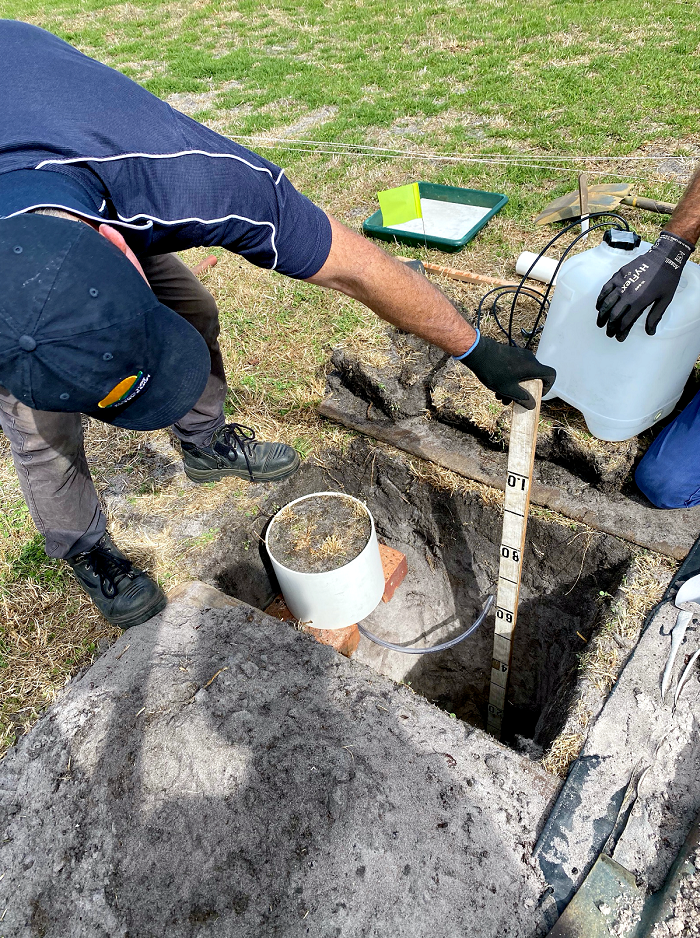
The trial is a part of the four year uPtake project, delivered by the Department of Primary Industries and Regional Development (DPIRD) and the Department of Water and Environmental Regulation and seven local catchment groups.
DPIRD development officer David Rogers said the trial at Waroona would provide valuable scientific information to assist landholders develop informed fertiliser strategies to optimise production, while minimising nutrient leaching.
“The trial is comparing a low water-soluble phosphorus product against a typical high water-soluble superphosphate fertiliser, measuring pasture productivity, as well as the water and dissolved nutrients that leach through the soil,” he said.
“A series of 30 underground collection devices, called lysimeters, have been installed to capture the water and nutrients that drain through the soil during rainfall. The amount of water and its nutrient concentration are measured.
“It is important to monitor both plant production and water quality, as we need to assess the potential of using low water-soluble phosphorus fertiliser to generate benefits to both the farmer and the environment.”
Trial plots have been sown to a ryegrass and subclover pasture mix with varying rates of the two phosphorus fertilisers applied, while dry matter production will be measured throughout the growing season.
The research will compare two fertiliser products applied at the start of the season over seven treatments, ranging from 0 to 40 kilograms of phosphorus per hectare.
The trial site is typical of the sandy soils on the Swan Coastal Plain, which have extremely low phosphorus binding capacity resulting in phosphorus runoff contributing to poor water quality and algal blooms.
“If we can slow down the phosphorus loss on these sandy soils, we can go a long way to reducing phosphorus loss into waterways and estuaries,” Mr Rogers said.
“The data from this trial will provide landholders with a valuable insight into the performance of low water-soluble phosphorus products in comparison to high water-soluble phosphorus products, and whether these alternatives could fit into their fertiliser program.
“This information will ensure landholders have objective, scientific advice to make informed fertiliser decisions that benefit both business profitability, as well as environmental sustainability.”
The results from this trial and other related work will be extended to landholders at a field walk at the site in late winter or early spring and in other industry forums throughout the South West.
The new site is one of 52 trials established in the Peel-Harvey, Leschenault, Geographe, Hardy Inlet, Wilson Inlet and Oyster Harbour catchments over the past four years as part of the uPtake project, with industry and local grower groups.
The uPtake project is supported by the Healthy Estuaries WA program, through funding from the Australian Government’s National Landcare Program and the State Government’s.
It is supported by a technical reference group with representatives from the fertiliser and grazing industries, universities, catchment groups and farmers.
For more information about the uPtake trial visit estuaries.dwer.wa.gov.au/uptake/.
Picture caption: One of 30 underground collection devices is installed to capture water as part of a new uPtake trial to measure the effectiveness of low water-soluble phosphorus fertiliser for pastures and the environment.


